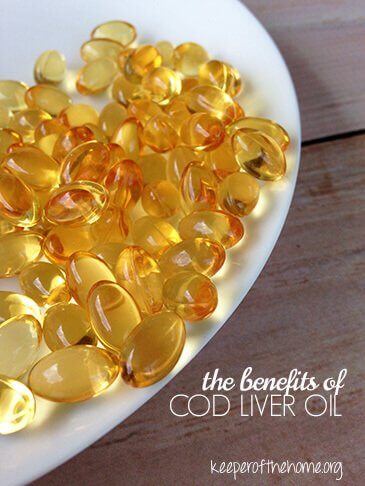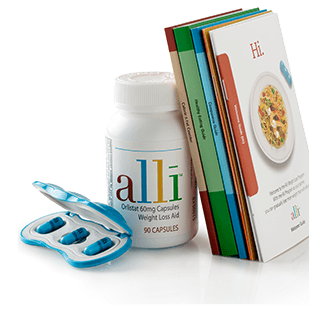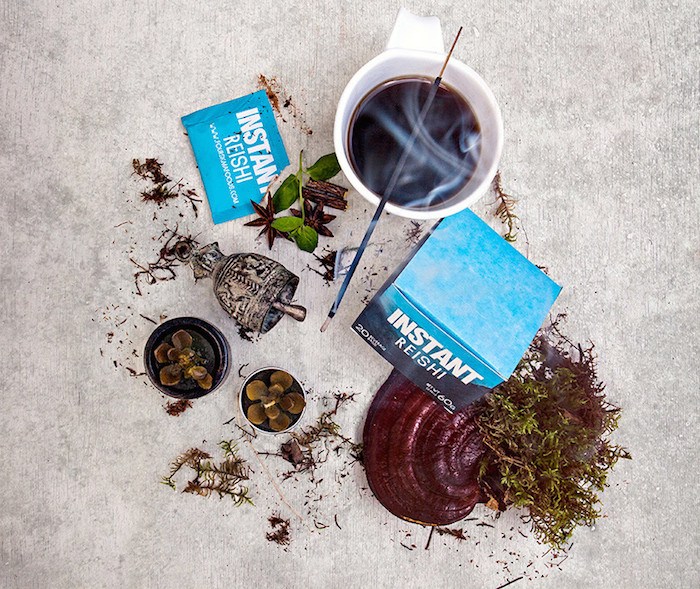I know. Cod liver oil. Yuck. Half of you just made a face as you read the title of this post. Bear with me, okay?
In the midst of a month
exploring traditional foods, I couldn’t hardly not cover this most important elixir, considered both a food and a supplement.
If I could recommend only one supplement to every family, it would be this one. If my family were to be stranded on a desert island and allowed to bring one superfood to consume, in addition to whatever we found on the island, I would pick this one (unless by some miraculous chance I could fly me in a big ol’ Jersey cow for raw milk… that would make it a toss up).
Cod Liver Oil as a Traditional Food
The use of cod liver oil goes back farther than you might think. Used primarily for nobility and soliders in the ancient Roman Empire, cod liver oil was thought to maintain strength. The ancient Vikings always kept a barrel of fermenting cod liver oil outside the doors of their homes. Even my grandparents from the East coast of Canada
grew up taking diligent spoonfuls out of barrels of fermenting cod livers along the wharf in the fishing community where they lived.
What Makes Cod Liver Oil So Good for Us?
3 things that cod liver oil has going for it:
1. It contains high amounts of EPA and DHA, both crucial Omega-3 fatty acids. DHA is particularly needed for proper brain and nervous system function.
2. High levels of a
natural form of vitamin A, a fat-soluble vitamin. In Weston Price’s studies, he discovered that primitive or traditional societies consumed at least 10 times the amount of both vitamin A and D that our modernized society consumes.
Weston Price considered the fat-soluble vitamins, especially vitamin A, to be the catalysts on which all other biological processes depend. Efficient mineral uptake and utilization of water-soluble vitamins require sufficient vitamin A in the diet. His research demonstrated that generous amounts of vitamin A insure healthy reproduction and offspring with attractive wide faces, straight teeth and strong sturdy bodies.
He discovered that healthy primitives especially value vitamin-A-rich foods for growing children and pregnant mothers. The tenfold disparity that Price discovered between primitive diets and the American diet in the 1940s is almost certainly greater today as Americans have forsworn butter and cod liver oil for empty, processed polyunsaturates. (
source)
3. Plentiful vitamin D, a nutrient that
most North Americans are deficient in, particularly those who live in cloudier climates with less sunshine (I say as I stare out my window, 6 months into the West Coast grey and rainy season). Recent research has been strongly connecting vitamin D with the immune system and autoimmune diseases. It is also important for bone strength (it ensures correct levels of calcium in the blood), for blood sugar balance, for fertility, for cancer prevention and more.
Can I heap some more praise onto the humble oil of the cod liver?
This marvelous golden oil contains large amounts of elongated omega-3 fatty acids, preformed vitamin A and the sunlight vitamin D, essential nutrients that are hard to obtain in sufficient amounts in the modern diet. Samples may also naturally contain small amounts of the important bone- and blood-maintainer vitamin K.
There is hardly a disease in the books that does not respond well to treatment that includes cod liver oil, and not just infectious diseases but also chronic modern diseases like heart disease and cancer. Cod liver oil provides vitamin D that helps build strong bones in children and helps prevent osteoporosis in adults. The fatty acids in cod liver oil are also very important for the development of the brain and nervous system. “If you want to prevent learning disabilities in your children,” said David Horrobin, distinguished medical and biochemical researcher, “feed them cod liver oil.”
Cod liver oil contains more vitamin A and more vitamin D per unit weight than any other common food. One hundred grams of regular cod liver oil provides 100,000 IU of vitamin A, almost three times more than beef liver, the next richest source; and 10,000 IU vitamin D, almost four times more than lard, the next richest source. Of course, cod liver oil is only consumed in small amounts, but even a tablespoon (about 15 grams) provides well over the recommended daily allowance for both nutrients. (
source)

Caden showing you how strong his cod liver oil makes him!
Who Should Take Cod Liver Oil?
I personally follow the WAPF recommendations for cod liver oil dosages. They suggest the following (
source):
Based on these values, the dosage for the high-vitamin fermented cod liver oil is provided as follows:
Children age 3 months to 12 years: 1/2 teaspoon or 2.5 mL, providing 4650 IU vitamin A and 975 IU vitamin D.
Children over 12 years and adults: 1 teaspoon or 10 capsules, providing 9500 IU vitamin A and 1950 IU vitamin D.
Pregnant and nursing women: 2 teaspoon or 20 capsules, providing 19,000 IU vitamin A and 3900 IU vitamin D.
It should be noted that if you are taking a fermented cod liver oil, like Green Pasture, the suggested servings are actually 1/2 of these amounts, and many people find those dosages to be sufficient. If you are taking another brand, compare the vitaminA and D levels to see how they match up to the suggested dosages above.
Which Cod Liver Oil Should I Use?
The one that our family personally uses (most of the time) and that I would recommend is
Green Pasture.
This is the only brand I know of for sure that uses a traditional method of fermenting the oil (lacto-fermentation), rather than subjecting it to high temperature processing. This retains far more nutrients and possibly even increases nutrient content, as the lacto-fermentation method tends to do to most foods. It also contains the ideal vitamin A to D ratio, which is 5:1.
Additionally, many brands of cod liver oil have been highly processed, deodorized, bleached and as a result of dwindling vitamin content at this point, they have synthetic vitamins added back in. So much for being a traditional food supplement!
Garden of Life Icelandic Cod Liver Oil is one that we’ve used somewhat, as it is not deodorized and contains natural vitamins, not synthetic ones (but, it may have a ratio of anywhere from 8:1 up to 25:1, depending on what you read).
Carlson Norwegian Cod Liver Oil is another respectable brand, though its ratio is only about 2:1 or 3:1 (WAPF lists it as a “Good”, though not “Best”, choice). They also list
TwinLabs Cod Liver Oil, which our family took for years before learning about Green Pasture. I would imagine that it is more processed than some brands, as the taste wasn’t as hard to take, but it was still incredibly useful for helping my eczema because of its fatty acid content. I can’t really speak to whether the A and D are synthetic or not, but their ratio is 10:1.
Interestingly, one reason to pay attention to the A to D ratio is that
vitamin D is actually protective retinol (vitamin A) toxicity, a concern to some. So cod liver oil, eaten as a the whole, natural food that it is particularly safe in that regard. If you’re concerned about vitamin A toxicity,
this is a good read. Long, but helpful.
What If I Truly Can’t Afford the Really Good Stuff?
Take something anyways. At least, that’s what I think. Some real foodies will adamantly tell you only
Green Pasture and nothing else. Not me.
I would rather see someone at least getting in those fatty acids, and hopefully some of the natural vitamin D and A, than nothing at all. I admit, the thought of the synthetic vitamins makes me cringe, so if you’re looking at several cheaper brands, I would try calling their customer hotlines or doing some internet research to see whether they include synthetic vitamins or not.
I do have to say, though, that the good stuff isn’t as expensive as it seems. When I first saw that a bottle of Green Pasture was a whopping $44, I just about had a heart attack. But, when I got it and saw just how small a dose is (particularly a child’s, but even an adult’s) I realized that it would definitely go further than I had thought. And, there are so many places in our budgets where we have no qualms about spending $11 (about the cost of a one-month supply for an adult), like those 2-3 lattes a month (or more)… isn’t this worth the cost?

My dutiful Abbie, taking her cod liver oil straight.
And Just How Do I Get This “Magical Elixir” Down?
Why, you plug your nose, of course!
I’m (somewhat) joking, but if that doesn’t work for you, here are some ideas that might:
- Add liquid cod liver oil to some orange juice, and chug it down.
- Find the best flavor you can find. Personally, Cinnamon Tingle is so far our favorite Green Pasture flavor, and I think my kids liked TwinLabs Mint quite a bit, and the Carlson lemon flavored oil is decent. I find Garden of Life a bit hard to swallow.
- Try an emulsified oil. My favorite TwinLabs flavor was the Emulsified Mint (unfortunately, it also ended up a lot more expensive, but hey, if it helps you get it down…). Green Pasture just came out with a new line of emulsified oils as well.
- Follow whatever you choose to take with a swig of water and something with a stronger flavor. We like a piece of cheese, raisins, and have even been known to use chocolate chips (healthier ones, of course!) as bribery.
- If all else fails, just take the capsules like my hubby does. He uses the Green Pasture orange flavored ones, and never complains about fishy burps or the like.

Do you take cod liver oil? Do you notice a difference in your health when you take it? And how do you get it down?
Disclaimer: I am not a certified medical professional of any kind and am not qualified to give you medical advice, to diagnose any illness or prescribe treatment. My goal is to help to educate and inspire you to take responsibility for your own family’s health and make informed choices of your own, not to consult you on medical treatment.
And no, this post was not sponsored by Green Pasture (or any other brand). They are generously sponsoring a giveaway this Thursday (yay!), but that has nothing to do with this post, it just happens to be the brand our family uses most often.
keeperofthehome.org
Stephanie Langford
 What is it—and how does it work? The active ingredient in the supplement is orlistat, which is designed to keep your body from absorbing the fats you eat.
What is it—and how does it work? The active ingredient in the supplement is orlistat, which is designed to keep your body from absorbing the fats you eat. 1.
1.  2.
2. 3. Plank
3. Plank













